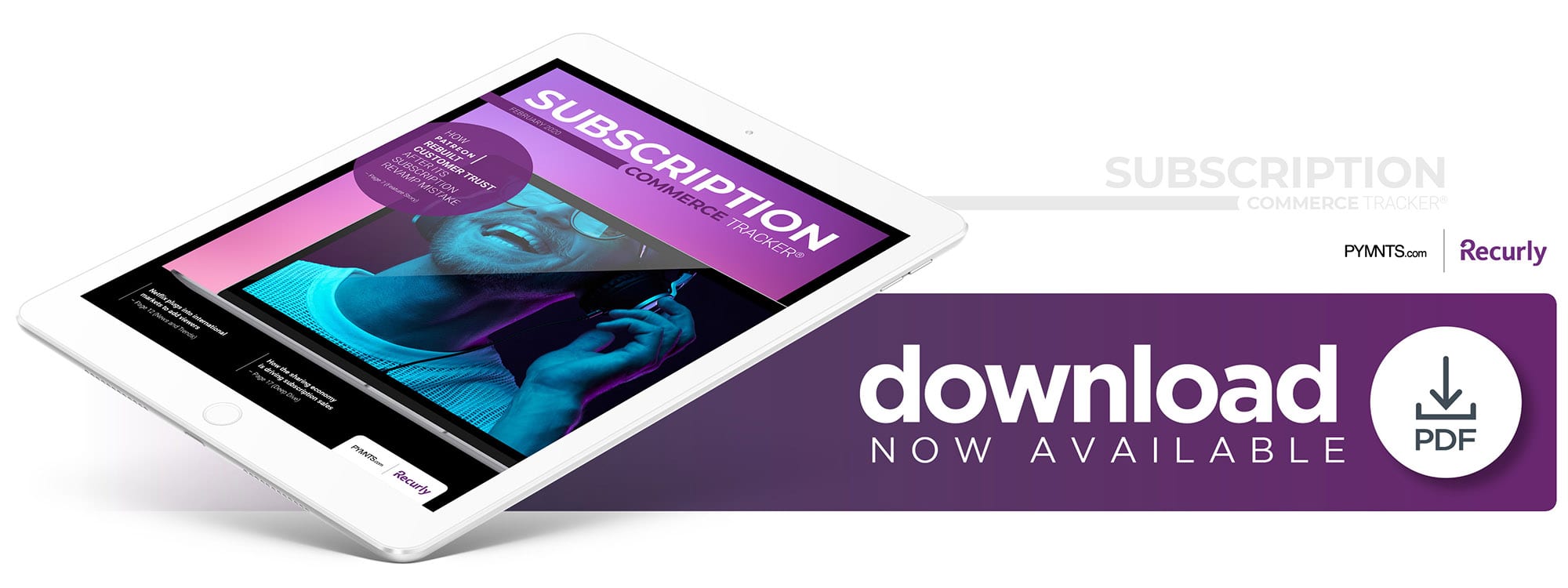
 The sharing economy has rapidly expanded in the U.S., but even the most popular innovations fall out of favor if they do not keep customers satisfied. The market’s players have taken this to heart, tapping subscription-based strategies to solidify customer loyalty, boost revenues and maintain upward trajectory.
The sharing economy has rapidly expanded in the U.S., but even the most popular innovations fall out of favor if they do not keep customers satisfied. The market’s players have taken this to heart, tapping subscription-based strategies to solidify customer loyalty, boost revenues and maintain upward trajectory.
The number of U.S. adults participating in the sharing economy is expected to grow to 86.5 million next year — up from 44.8 million in 2016 — driving revenue in the space to $335 billion by 2025. Companies both in and out of the sharing economy are investing in enterprise system upgrades, which will enable subscription model adoption and boost the value of the agile monetization platform market from $8.5 billion in 2016 to $36.75 billion by the end of this year. Subscription eCommerce has grown more than 100 percent per year since 2016, largely because of consumer and business demand, leaving many companies wondering if combining the two approaches will create a positive impact.
This month’s Deep Dive explores how consumer demand has impacted subscription-based sharing economy services, as well as the operational, financial and regulatory challenges both spaces must confront as they expand.
Demand for Convenience and Flexibility Drives Growth
Subscription platforms and the sharing economy are driven by users’ demand for affordability, convenience, flexibility and variety. Both markets leverage the internet and mobile technology to gain footholds in various industries, while also providing access to products or services consumers would increasingly rather rent than own.
Those in the sharing economy provide goods or services to users around the globe, many of whom no longer wish to assume long-term financial burdens, such as car loans. These consumers would rather use apps to hail Uber or Lyft rides, for example. This is especially true of millennial consumers, who tend to travel light and consume less, and have billions of dollars in spending power.
Three different marketplace types — person-to-person (P2P), business-to-business (B2B) and business-to-consumer (B2C) — provide sharing economy opportunities to specific audiences. P2P providers such as Airbnb do not own the assets on their platforms, instead allowing owners to list their rentable goods. B2C marketplaces, such as Rent the Runway and Zipcar, own their resources and allow users to rent them for predetermined timeframes. B2B platforms help companies rent necessary gear — a construction firm could rent tractors from platforms such as Yardclub, for example.
These marketplaces grant users access to what they need, giving them convenience, flexibility and access to new opportunities. A small company working to complete projects on time and grow its business might not have the finances to purchase its own equipment, making renting a budgetary godsend. A woman looking for an outfit for a company banquet might not want — or be able — to buy an expensive garment for the occasion, increasing the appeal of clothing rental options.
An End to Ownership
A recent survey found that more than 80 percent of U.S. adults who are familiar with the sharing economy say it makes everyday costs more affordable, while 83 percent noted its convenience. One of the sharing economy’s founding principles is that it encourages sustainability, with 76 percent of adults believing that sharing is better for the environment. Rented items can be used multiple times by many different people before being discarded — a road bike gathering dust in a garage can assist a consumer while giving its owner a new income source, for example. These same factors also make subscriptions appealing, giving consumers access to otherwise pricey products or services for lower monthly or annual fees.
Subscriptions are now key to the sharing economy, where some retailers have launched such offerings to supplement their operations. PYMNTS dubbed 2019 the year of clothing subscriptions after American Eagle Outfitters, Banana Republic, Urban Outfitters and other brands announced packages or partnerships for clothing rentals. The space is projected to make up 75 percent of direct-to-consumer (DTC) brands by 2023.
That growth is impacting other retail spaces as well. Furniture retailer IKEA announced it would consider a subscription through which items like desks and sofas could be reused as many times as possible before being recycled, citing a push for increased sustainability. Cadillac and Toyota are similarly offering rental and carsharing subscription options, contributing to a 71 percent CAGR for the global automotive subscription market through 2022. Subscribers pay flat monthly fees for access to fleets of cars from the automakers.
This potential end to ownership bodes well for subscription growth, too. One report found that 71 percent of adults in 12 countries use some kind of subscription service, and that 74 percent believe consumers will look to subscribe rather than own in the future. Companies interested in additional funds beyond rental fees are attracted to subscriptions’ recurring revenue streams, which would allow them to better manage their budgets, grow their businesses and plan ahead. Shifting to such a model can pay off big for businesses, with firms in the Asia-Pacific, Europe and North America seeing subscription-based sales grow by more than 300 percent over the last seven years, according to recent research. This increase represents a CAGR of 18 percent, which can be felt in almost every industry.
Overcoming Growth Speed Bumps
However, sharing economy and subscription businesses are contending with financial, operational and even regulatory challenges that could halt growth. Traditional taxi drivers have fought carsharing services, for example, sometimes leading to violent strikes around the globe. Damaged products or misleading advertising could hurt the trust that underpins the sharing economy, making consumers feel unsafe. These concerns are not unfounded, either — Uber has dealt with sexual assaults, murders and fatal crashes that occurred through its platform, for example. Each negative story or interaction can hinder customers’ satisfaction and prevent new users from onboarding.
Sharing companies are also tackling regulatory and legal uncertainties as cities and states look to better regulate their operations, ensuring quality standards and determining whether firms are fit to operate. Overcoming such issues could result in a boon for those that employ subscription models, however, pushing many to spend millions on innovative payment technologies like artificial intelligence (AI) and machine learning (ML) to fight sharp upticks in fraud, better tailor their users’ experiences and prevent customer churn.
Sharing economy and subscription-based business models also have demographics on their side. Millennials and members of Generation X and Z are customers of both, and the latter is equipped with an annual spending power of $44 billion. Both spaces already appear to be enjoying a fiscally symbiotic relationship, though — one that promises a smoother ride to even greater growth.